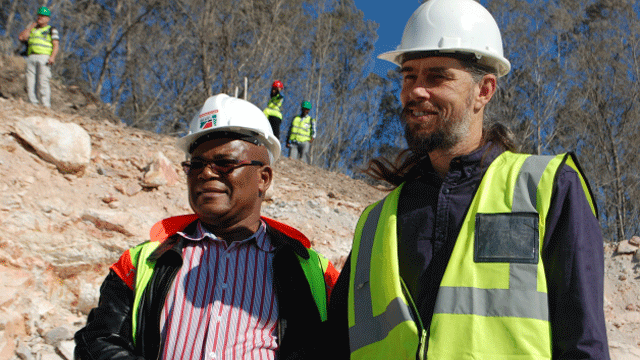
The South African National Roads Agency (SANRAL) on Wednesday announced that several new invertebrate and plant fossils had been excavated in the rock debris of the Witpoort Formation along the N2, where upgrades to the road are taking place between Grahamstown to Peddie.
Speaking to the media at Rhodes University, Regional Manager at SANRAL, Mbulelo Peterson, said that the company is now planning to create a heritage site with their new findings to attract tourists.
SANRAL will be working with Rhodes University on the project and will build a bridge structure where people will be able to view the entire heritage area.
“Conservation is development, any development without conservation is not good,” said Peterson.
During the media briefing, renowned South African palaeontologist, Dr Robert Gess, who is based at the Albany Museum in Grahamstown, said that the plant and animal fossils that were unearthed are from ancient open river mouth ecosystems.
He described that they have collected the remains of a shrub-sized Iridopterid plant, from a group that is ancestral to the horse plant.
“Interestingly, while the Iridopteralians were located both at the Waterloo Farm and the current fossil excavation site, they are different and both are previously undescribed species,” said Gess.
A number of other plant fossils were excavated in the area including the clubmosses, which is almost knee-high, as well as branching stalks that resembled a cats tail.
“In addition, we are busy describing a new species of bivalve or mud clams from Waterloo Farm. However, we are at the new outcrops because we are dealing with an entirely different bivalve that has never been found,” described Gess.
Project manager at SANRAL, Steven Robertson, explained that when they first met Dr Gess and he explained the findings, they thought of how they can preserve it and make sure that it becomes general knowledge.
“When we first met Dr Gess we were debating on how to preserve and allow the public to access such findings in the area,” said Robertson.
The new excavation area will be including information boards and displays on the significance of the fossils, their age and how they fit into the evolutionary history of the Earth.
This is actually not the first time that fossils have been accidentally unearthed in the area around Grahamstown during roadworks.
Last year in September, Dr Gess discovered more than 30 specimens of Africa’s earliest coelacanth nursery dated to 360 million years ago. These babies of an ancient fish-like animal are believed to have lived more than 120 million years before the arrival of the dinosaurs.
In 2013, Dr Gess, again working with SANRAL, published the finding of an ancient scorpion species now called Gondwanascopio emzantsiensis (which lived more than 360 million years ago) in the journal African Invertebrates.
Image: SANRAL Regional Manager, Mbulelo Peterson and Palaentologist Dr Robert Gess
